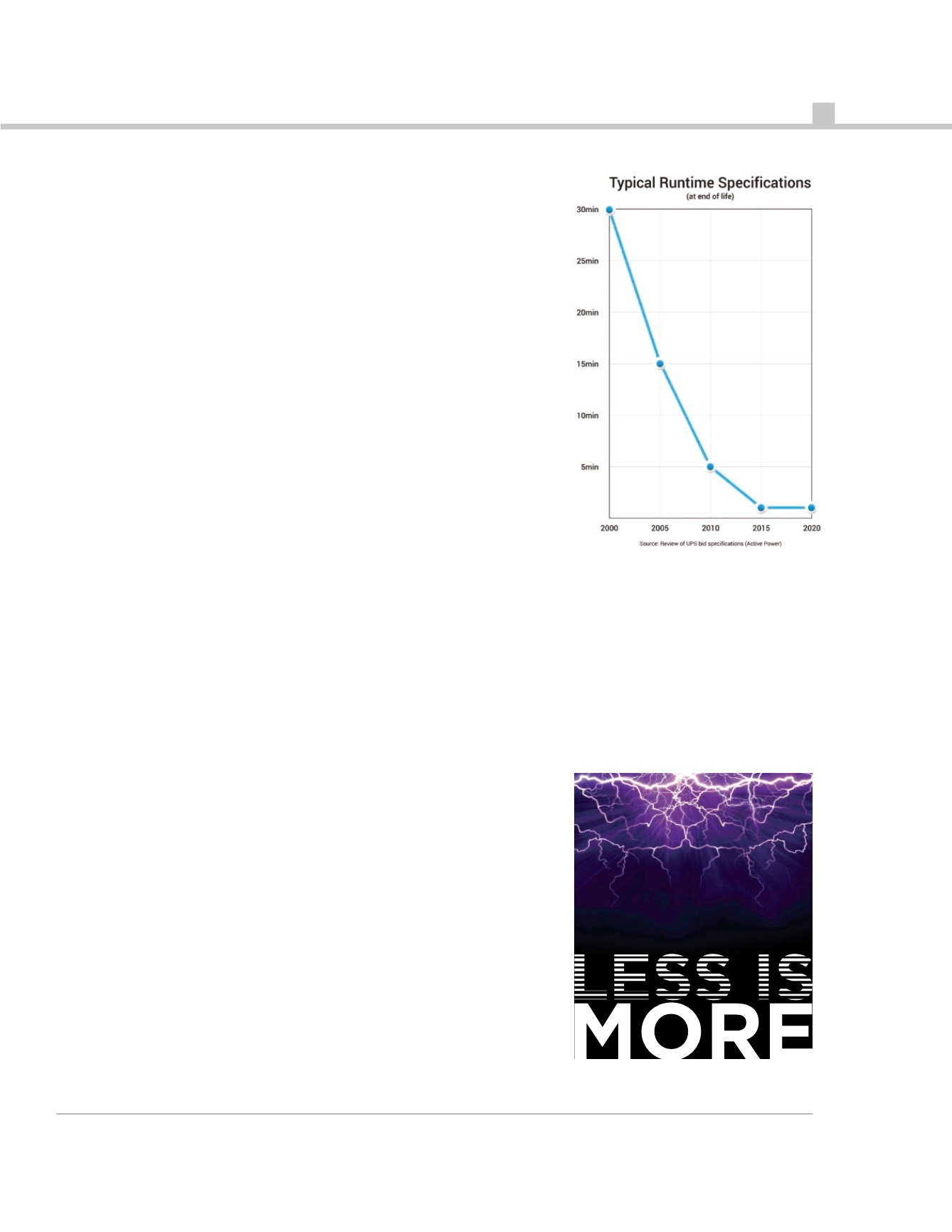

55
WWW.7X24EXCHANGE.ORGneeded. Generators can now start
and fully support a load much faster
than in decades past, and the
advent of cloud computing and
virtualization have also contributed
to this growing trend.
longer ups runtimes are a
byproduct of an era when backup
generators were slow to start or
unreliable, or when generators were
not present and the ups had to
carry the load as long as possible
until utility power returned. by
contrast, most modern on-site
generators can be online within 10
seconds, making multiple minutes
of ups stored energy redundant.
additionally, some critical facilities
have failover safeguards in place
where operations are switched over
to a backup data center or cloud
environment. these transitions also
happen fairly quickly, usually taking
less than 60 seconds.
so if multi-minute ups runtimes are
no longer necessary, why pay for
more when less will do? that’s a
question that many customers
across all industries are asking
themselves, resulting in a growing
acceptance of shorter ride-through
times. in this post-recession era,
facility operators are constantly
looking for ways to save money and
floor space, with many finding that
smaller, more affordable ups
systems can help them achieve both
goals.
extended ride-through times are
generally achieved through
attaching large quantities of valve
regulated lead acid (vrla) batteries
to the ups. these extra batteries
increase costs in multiple ways: at
first purchase, increased
maintenance and monitoring costs,
and in periodic (4 to 6 year) battery
replacements. vrla batteries must
also be kept at specific
temperatures, meaning cooling
equipment and costs must be built
into the budget.
since extra runtime is no longer
valuable, this equipment represents
an unnecessary and unjustifiable
expense for owners and operators
of mission critical facilities. the less
runtime required, the fewer
batteries are needed, adding up to
significant savings over time. for
operators willing to consider
emerging technologies such as
flywheel-based ups systems, the
savings can be even larger, as these
units require less maintenance and
replacement than their battery-
based counterparts and can
withstand much higher ambient
temperatures. in data centers and
other mission critical facilities,
square footage comes at a
premium, and smaller ups systems
free up floor space for other
applications and hardware.
while many within the industry have
recognized the benefits of shorter
ups ride-through times, others are
still apprehensive towards change.
this presents an opportunity for
manufacturers to continue
educating customers about the
evolution of critical power
protection equipment and to
explain why runtimes have
diminished in recent years. this also
presents an opportunity for
operators to rethink conventional
electrical infrastructure prior to the
start of a new design build. for
those with equipment already in
place, question whether what’s
deployed is really worth the cost
and space. when all designers,
engineers and operators trust that
they can reduce costs without
jeopardizing the overall system’s
reliability and availability, only then
will multi-minute ups runtimes truly
become a thing of the past.
Todd Kiehn is Vice President, Product Management and Modular Infrastructure Solutions at Active Power, Inc.
He can he reached at
[email protected]
















